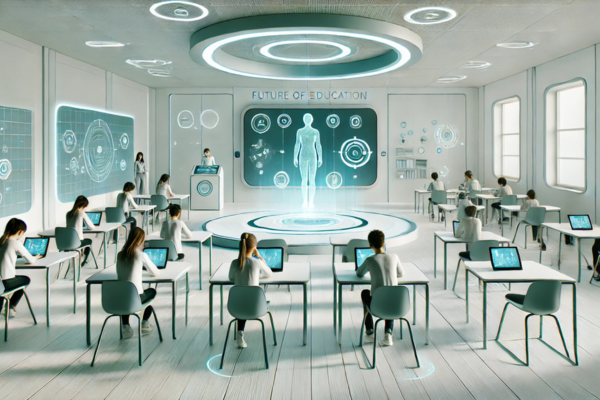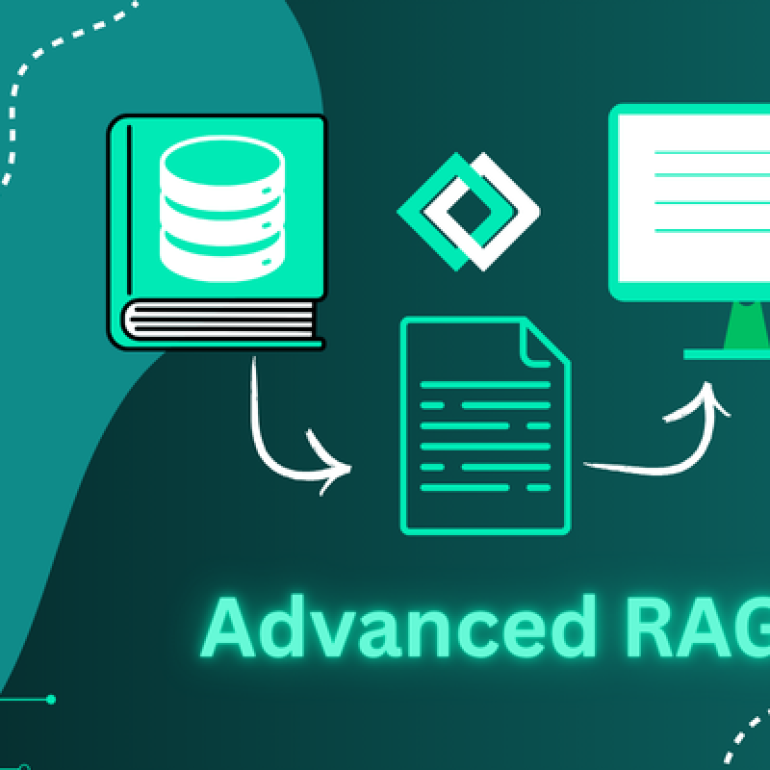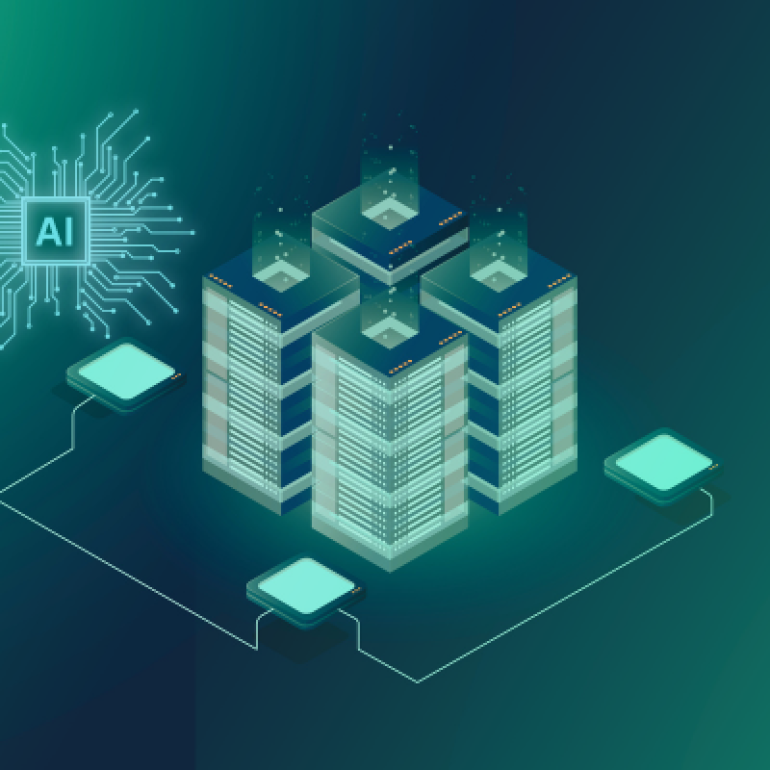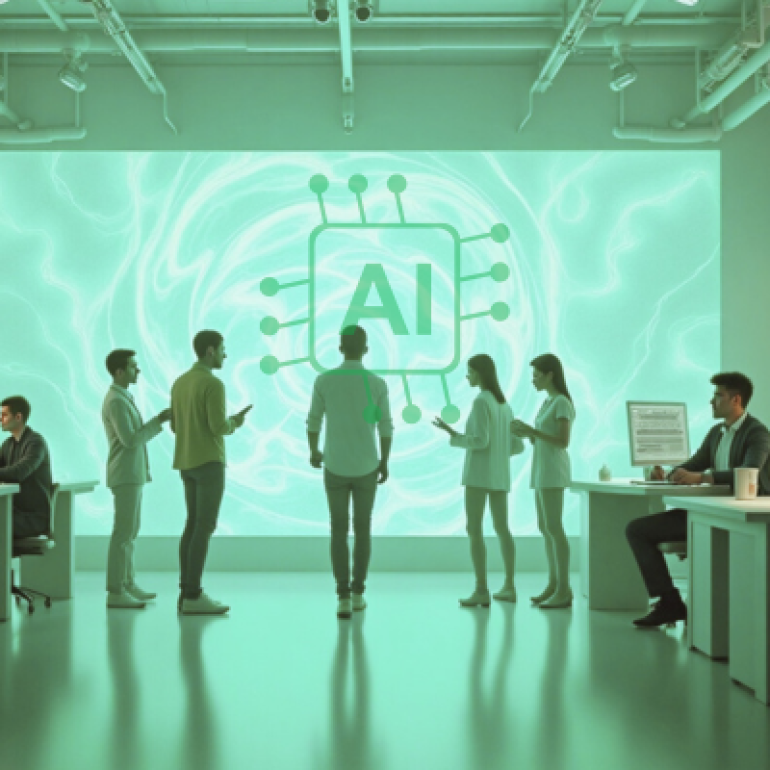- 23 June 2025
- Dr. Chandra Bondugula
How AI Is Changing Education Industry
Rapid technological development is driving educational institutions and teachers to apply artificial intelligence to enhance teaching, speed administrative tasks, and give each student unique learning opportunities. AI's integration into education goes beyond mere automation; it entails a profound transformation in our instruction, learning, and running of learning environments.

9 Ways Artificial Intelligence Changing the Scene for Education
Rapid technological development is driving educational institutions and teachers to apply artificial intelligence to enhance teaching, speed administrative tasks, and give each student unique learning opportunities. AI’s integration into education goes beyond mere automation; it entails a profound transformation in our instruction, learning, and running of learning environments.
The reality is somewhat different, even although many people worry that artificial intelligence could replace teachers and other educational professionals. Conversely, artificial intelligence is positioned to improve and complement the efforts of teachers, therefore augmenting the impact of their duties and providing new ways to engage with students and improve learning outcomes. From innovative classroom technology to personalized instruction, nine ways artificial intelligence is changing education will be discussed in this article. This blog will examine nine amazing ways artificial intelligence might transform the field of education.
1. AI-Powered Individualized Education
For pupils, artificial intelligence is allowing very customized learning opportunities. By use of algorithms and data analytics, AI-powered applications may evaluate students’ strengths and shortcomings, therefore customizing material to fit their particular need. Students may so learn at their own speed and get the appropriate help at the appropriate moment. An article from the World Economic Forum claims that artificial intelligence can make educational opportunities “more tailored and effective,” so enabling an adjustable curriculum depending on individual achievement.
How can artificial intelligence accomplish tailored learning?
AI systems gather information on students’ degrees of learning, development, and involvement. Then, the information is utilized to modify examinations, assignments, and course of instruction to fit the learner’s aptitude and need. Schools and colleges are progressively including tools like smart textbooks and AI-driven tutoring systems to improve student learning.
2. AI Boosts Teacher Effectiveness
Teachers have historically devoted a lot of their time to grading papers, planning lessons, and handling administrative chores. Many of these chores can be automated by artificial intelligence, therefore allowing more time for educators to concentrate on student interaction and instruction. Real-time grading of assignments, analysis of student performance, and even recommendations for teaching strategy changes made possible by artificial intelligence capabilities
Forbes notes how by automating tedious work and freeing teachers to spend more time on creativity and student connection, artificial intelligence would “forever change the teaching profession”.
3. AI for Office Work
Oversaw of educational institutions entails several administrative tasks including enrollment, student data administration, and scheduling. Through process automation, error reduction, and increased efficiency, AI-driven systems can simplify these chores. This helps educational institutions to better allocate resources and concentrate on providing a better quality of education.
4. AI-Powered Smart Classrooms:
Intelligent AI Made Classrooms Artificial intelligence-driven other Smart classrooms are proliferating throughout educational institutions all around the globe. These classrooms check attendance, analyze student involvement, and even evaluate the ambient surroundings using artificial intelligence. This information helps one to adjust the lighting, temperature, and other elements so guaranteeing ideal learning conditions. Real-time student involvement in AI-powered systems, for instance, lets them recommend when a break would be required.
5. AI-Driven Virtual Learning Assistants
Virtual assistants are breakthrough in the sphere of education. Virtual learning assistants and other AI-driven chatbots help students with their searches by promptly answering queries regarding course materials, assignments, and more directly. This allows pupils to learn on their own speed and independent basis and assures quick access to direction when needed.
Available 24/7, these virtual assistants give pupils an ongoing education outside of time zone or geography.
6. Artificial Intelligence Can Help Identification of Learning Disorders
Early on diagnosis of learning difficulties has great potential for artificial intelligence. By means of student learning patterns, artificial intelligence systems can identify early dyslexia, ADHD, and other learning disorders. This knowledge allows educators to intervene early to ensure that their school environment provides the resources required for the children to grow.
Emphasizing how early treatments could be produced largely by artificial intelligence, World Economic Forum says that “AI can help identify hidden potential in students.”
7. Learning with Artificial Intelligence and Augmented Reality
AI is collaborating closely with augmented reality (AR) to produce immersive learning opportunities. AR systems using artificial intelligence can change material depending on answers and interactions of students. In disciplines including medicine, engineering, and architecture—where practical, hands-on learning is very vital—this mix is especially helpful. AR simulations driven by artificial intelligence let students interact with complex ideas in 3D and see them more naturally.
8. Data-Driven Ideas for Teachers
Not only does artificial intelligence help kids; it also provides helpful information to teachers. Examining massive amounts of student data lets artificial intelligence algorithms help teachers find areas of student trouble, learning gaps, and trends. More concentrated treatments made feasible by these realizations serve to improve student performance. AI systems can also generate reports providing a full picture of a student’s performance, development, and chances for improvement.
“AI can turn education in 2024 by offering actionable data that empowers both educators and students,” the Forbes article on artificial intelligence and data in education adds.
9. AI in Development of Skills and Lifelong Learning
As the workforce needs new abilities, artificial intelligence is allowing lifetime learning. Artificial intelligence-driven platforms offer customised, on-demand learning options for those attempting to upskill or reskill. These websites provide a range of courses suitable for students’ degree of knowledge and development, so enabling them to remain competitive in an always changing job market.
How may artificial intelligence affect future educational developments?
Artificial intelligence is expected to be even more crucial in schooling by 2025 since it will allow people to pick highly sought-after essential talents in many different fields. Artificial intelligence technology will allow continuous learning even beyond traditional classroom settings. According to Forbes, artificial intelligence is about to “change the workforce landscape by enabling people to access learning materials anytime, anywhere.”
How could artificial intelligence transform learning without replacing jobs?
Artificial Intelligence in education is not meant to replace teachers, but to support and empower them. By taking over routine and administrative tasks, AI allows educators to focus more on meaningful teaching. This shift enables a more personalized and engaging learning experience for students. Rather than erasing the role of teachers, AI enhances their ability to connect, innovate, and address individual student needs.
- Supports Teachers: AI helps teachers focus more on students, not admin work
- Personalized Learning: Enables tailored support for every learner’s needs.
- Boosts Creativity: Frees time for innovation and new teaching methods
- Better Interaction: Strengthens student-teacher relationships through more meaningful engagement.
Conclusion
Artificial intelligence is clearly revolutionizing the field of education fairly drastically as we have witnessed. Artificial intelligence offers immense promise from tailored training to improving administrative performance and creating smart classrooms. As educational institutions and teachers embrace artificial intelligence technologies, students should expect more personalized, entertaining, and effective learning environments.
At SHC Technologies, our area of expertise is predictive analytics solutions driven by artificial intelligence aimed to support educational institutions focused on digital transformation. Our AI-powered solutions are designed to boost learning outcomes and improve operational efficiency across the education sector.




